The hut offers a snowdrift frame made from weighted carbon fibre mesh, this contoured landscape mimics the surrounding vertiginous precipices and landscapes, the carbon fibre snowscape creates an artificial snow cave which can be dug into and around enabling climbers to inhabit the structure in a similar way to a snow cave.
The composite carbon frame catches the snowdrift using snow as an insulating material, as it is a mesh structure pockets of rooms can be carved into the build up of snow as well as air vents to help with air circulation,it is possible to further insulate the structure by digging a small pit deeper into one part of the cave floor to provide a place for the coldest air to gather, away from the occupants, the entrance may be partially blocked with chunks of snow to deflect wind and retain heat.
Multiple layers of Silicium applied to the carbon fibre mesh produce an electric current from direct natural light, photovoltaics can be used to store this energy which is forced through the electrical resistance wire embedded within the mesh, creating heat energy and then cooling the structure to create an icy surface trapping snow for added insulation, and melting it away as necessary, which in the process contributes to strengthening & insulating the structure.
A wooden frame, sits within the artificial snow cave, suspends an elevation of climbing ropes creating a more flexible space which can be canvased if necessary, inspired by the snow lotus whose leaves are covered with dense white woolly hairs minimising frost damage at night and preventing ultraviolet light damage from the intense high altitude sunlight, with this principal in mind the rope structure sways attempting to prevent freezing, it is clamped to the wooden frame in sections and can be added to. The artificial snow cave landscape mesh is self supporting, it rests on the undulating parts of the contoured carbon fibre mesh.
Cell like modules within the rope structure contain sleeping quarters, holographic filters applied to the carbon roof panels control temperature and direct light into and throughout the sleeping modules and into the artificial snow cave below. Green photovoltaic panels control light and produce energy stored in the carbon fibre snow cave mesh. The snow cave provides shelter at temperatures of 0C even if the outside temperature drops to -50 C; constructed by excavating snow so that the entrance tunnel enters below the main space to retain warm air, in this case within the snowscape mesh emerging into the wooden framed rope shelter.
Bio
Margot has an architecture design studio in London and Beijing; projects commissioned include a pop-up airport/airstrip hotel in Doha- The Jetway, which is a new building typology featured as part of Virgin Airways Disruptors. A series of projects followed focusing on renewable energy and sustainable architecture, including The Hydroelectric prison in Canada, The Spillway pavilion in Paris, The Hydro-electric Tidal House in Cape Town, The water purifying footbridge in Amsterdam and the Suspended Hotel Campsite in Provence to name a few.
She began running an undergraduate architecture design studio at The University of Greenwich and The Bartlett, U.C.L. Having worked for Zaha Hadid and NOX she opened her own research design studio, Decodeine, in 2000. Prior to which she was awarded a postgraduate diploma from the A.A. Completing her academic studies at U.C.L.
Margot lectured worldwide running seminars and design studios in advanced digital design in architecture at Washington University, St.Louis; Berkley school of architecture University of California; Austin Texas; University of Western Australia, Perth; Architectural Association, London; Harvard G.S.D and University of Sheffield. Published two monographs entitled Floating Realities, Spatial Pathologies and Dynamics & De-realisation with Springer and most recently contributed to Harvard Press Lebbeus Woods Unbound.
Margot`s academic, theoretical and practical deign approach focuses on encouraging cross-disciplinary dialogue to re-evaluate existing building typologies in light of environmental, social and technological change; By harnessing renewable energy to generate electricity endorses a sustainable environment and raises questions of appropriating the built environment and the ever-evolving role of architecture.
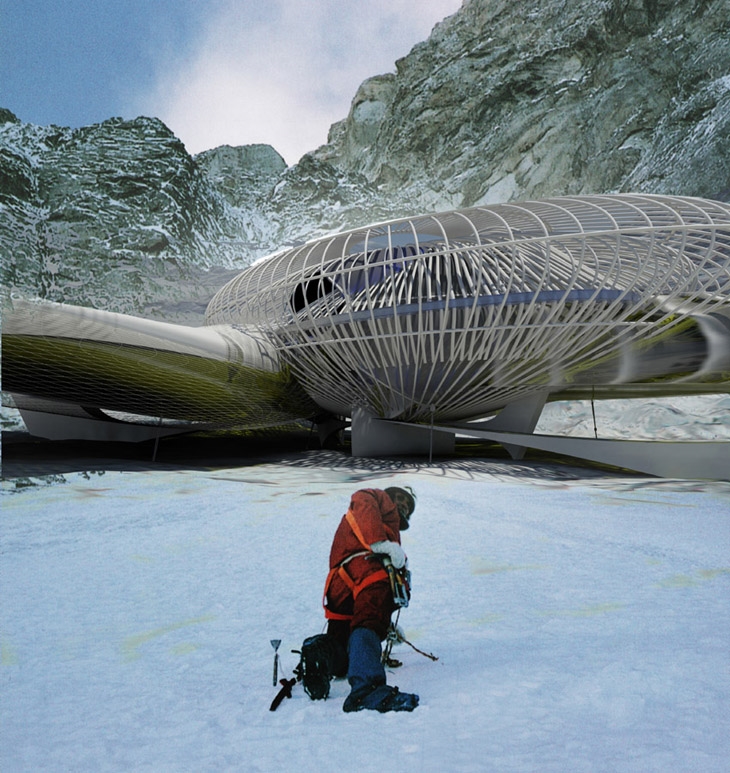 VIEW LOOKING UP SNOW CAVESCAPE
VIEW LOOKING UP SNOW CAVESCAPE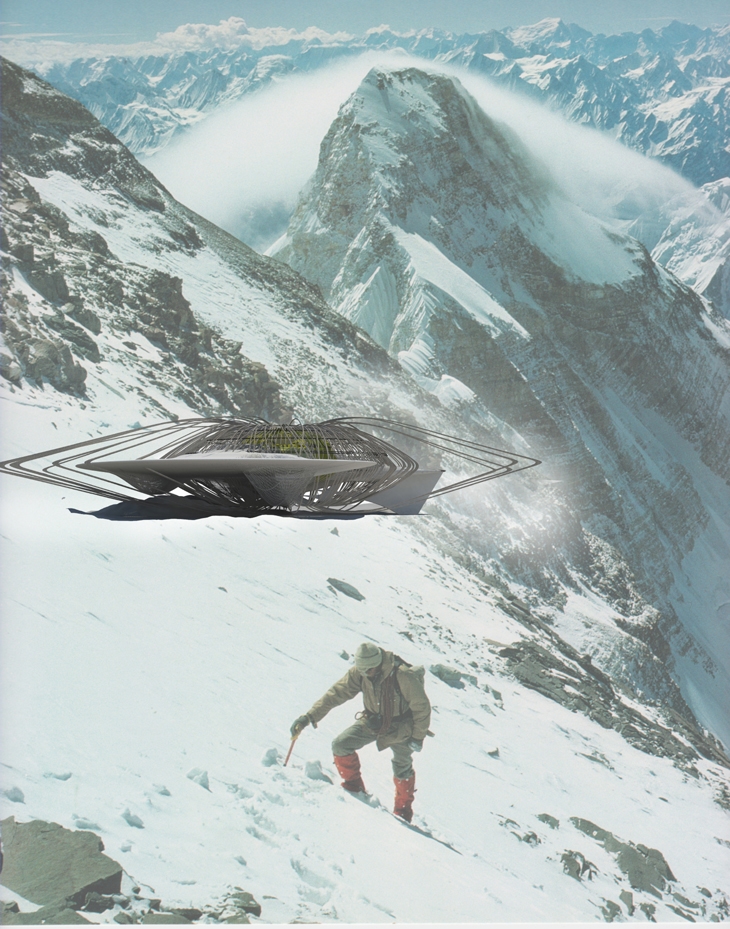 SNOW DRIFT
SNOW DRIFT 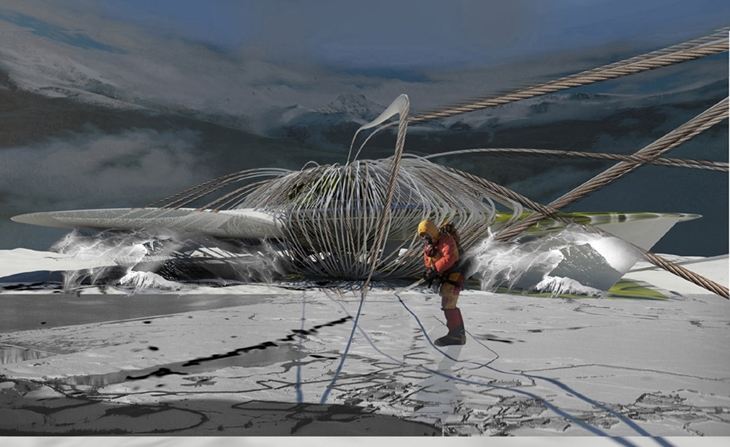 ROPE CLAD SLEEPING QUARTERS
ROPE CLAD SLEEPING QUARTERS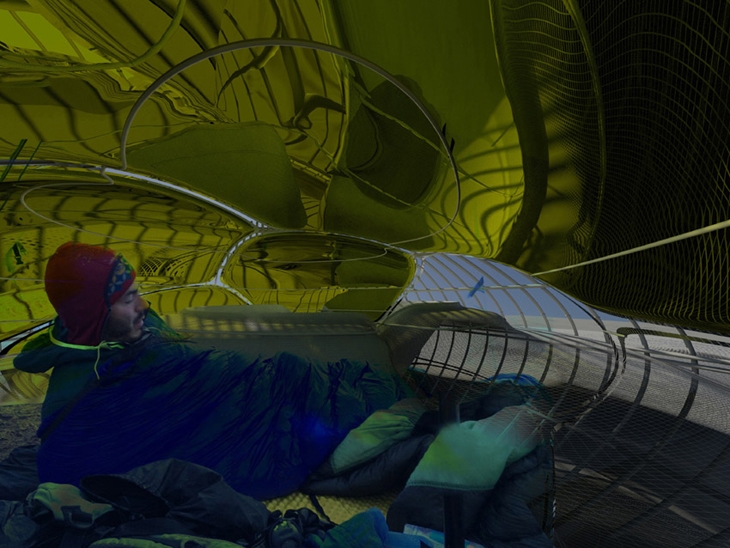 SLEEPING PODS IN ROPE STRUCTURE
SLEEPING PODS IN ROPE STRUCTURE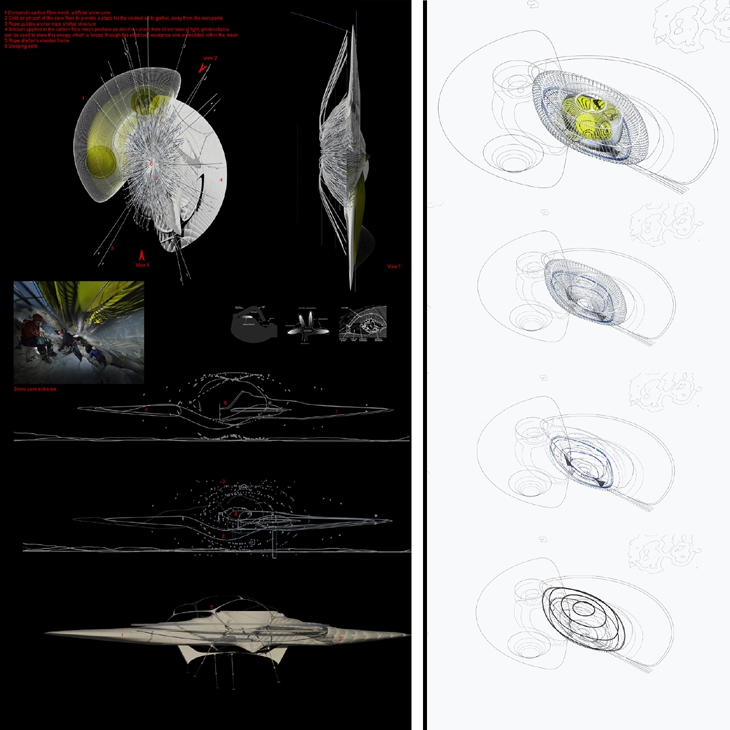 THE ARTIFICIAL SNOW HUT
THE ARTIFICIAL SNOW HUT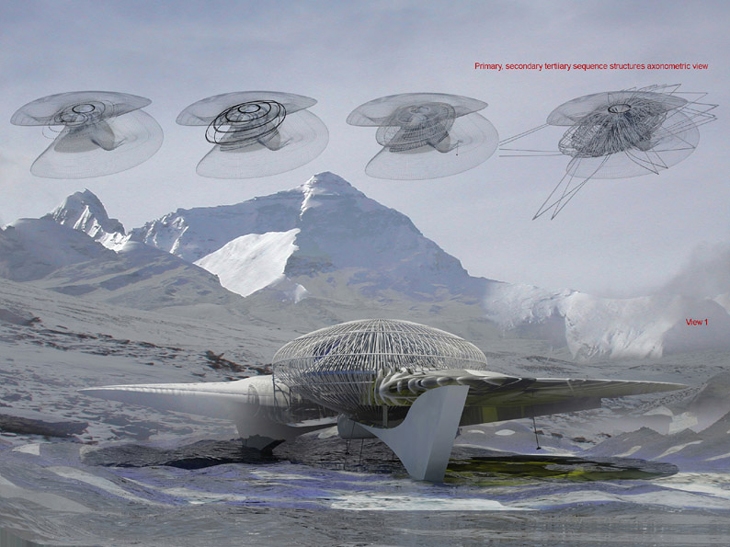 THE ARTIFICIAL SNOW HUT
THE ARTIFICIAL SNOW HUT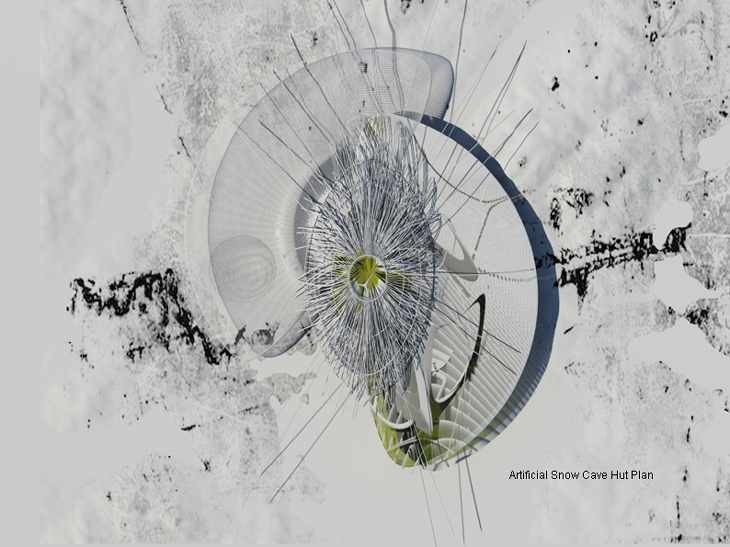 PLAN
PLAN ARTIFICIAL SNOW CAVE SEQUENCE
ARTIFICIAL SNOW CAVE SEQUENCEREAD ALSO: PRIMITECA / ANTIQUE COLLECTION & GLYPTOTECA / ARISTOTHEKE EUTECTONICS